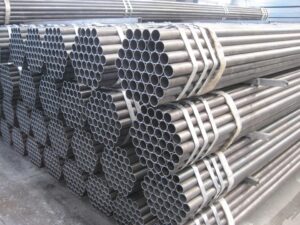Description
316 Stainless Steel Sheets: A Durable and Versatile Material for a Wide Range of Applications
316 stainless steel sheets are a cornerstone material in various industries, prized for their exceptional corrosion resistance, strength, and versatility. This austenitic chromium-nickel stainless steel, with the addition of molybdenum, boasts superior performance compared to its common counterpart, 304. This article delves into the properties, applications, and benefits of 316 stainless steel sheets, highlighting why they remain a preferred choice for demanding environments.
Composition and Properties: The Key to Performance
The superior performance of 316 stainless steel sheets stems from its carefully balanced chemical composition. Key elements include:
- Chromium (Cr): Provides corrosion resistance by forming a passive chromium oxide layer on the surface.
- Nickel (Ni): Stabilizes the austenitic structure, enhancing ductility, weldability, and toughness.
- Molybdenum (Mo): Significantly improves resistance to chlorides and other aggressive environments, making it ideal for marine and industrial applications.
This specific blend results in a material exhibiting the following beneficial properties:
- Excellent Corrosion Resistance: 316 stainless steel sheets are highly resistant to pitting and crevice corrosion, particularly in chloride-containing environments. This makes it suitable for use in saltwater, chemical processing, and food processing applications.
- High Strength and Ductility: Possessing good tensile strength and yield strength, 316 can withstand significant stress. Its ductility allows it to be readily formed, shaped, and drawn without fracturing.
- Weldability: 316 is readily weldable using various techniques, including TIG, MIG, and shielded metal arc welding. Proper post-weld heat treatment is often recommended to optimize corrosion resistance.
- Hygienic Surface: The smooth, non-porous surface of 316 stainless steel is easily cleaned and sanitized, making it ideal for hygienic applications such as food and pharmaceutical processing.
- High and Low Temperature Performance: 316 retains its strength and corrosion resistance at both high and low temperatures, making it suitable for extreme environments.
- Aesthetic Appeal: Offers a clean, modern look that complements various designs.
Applications Across Industries: A Material of Choice
The combination of these properties makes 316 stainless steel sheets a preferred choice across a diverse range of industries, including:
- Marine Industry: Used extensively for boat parts, railings, offshore platforms, and other components exposed to saltwater.
- Chemical Processing: Ideal for tanks, pipes, and equipment handling corrosive chemicals.
- Food and Beverage Processing: Employed in storage tanks, processing equipment, and food preparation surfaces due to its hygienic properties and resistance to acidic foods.
- Pharmaceutical Industry: Used in manufacturing equipment, storage containers, and cleanroom applications, where hygiene and corrosion resistance are paramount.
- Construction: Used for architectural cladding, roofing, and decorative elements due to its durability and aesthetic appeal.
- Medical Implants: Certain variations of 316L (low carbon) stainless steel are often used in medical implants due to its biocompatibility.
- Textile Industry: Used in processing equipment due to its resistance to dyes and chemicals.
Benefits of Choosing 316 Stainless Steel Sheets:
- Long-Term Cost Savings: While the initial investment might be higher than other materials, the longevity and durability of 316 stainless steel translate to significant long-term cost savings by reducing maintenance, repairs, and replacements.
- Reduced Risk of Contamination: Its hygienic properties minimize the risk of contamination in food, pharmaceutical, and other sensitive applications.
- Enhanced Safety: Its strength and corrosion resistance contribute to safer equipment and structures.
- Environmental Friendliness: Stainless steel is 100% recyclable, contributing to a more sustainable future.
Considerations When Selecting 316 Stainless Steel Sheets:
While 316 stainless steel offers numerous advantages, it’s important to consider the following factors:
- Cost: 316 is generally more expensive than other grades of stainless steel and carbon steel.
- Specific Application Requirements: Carefully assess the specific environment and operating conditions to ensure 316 is the optimal choice. For example, in particularly aggressive environments, super-austenitic stainless steels might be more suitable.
- Availability of Different Finishes and Gauges: Choose the appropriate finish and gauge to meet the specific design and performance requirements.
Conclusion: A Reliable and Versatile Solution
316 stainless steel sheets remain a valuable and versatile material for a wide array of applications. Its exceptional corrosion resistance, strength, hygiene, and weldability make it a preferred choice for demanding environments across numerous industries. By understanding its properties, applications, and benefits, engineers and designers can leverage 316 stainless steel to create durable, reliable, and sustainable solutions. When long-term performance and resistance to corrosive environments are critical, 316 stainless steel sheets stand out as a reliable and cost-effective option.

















Reviews
There are no reviews yet.